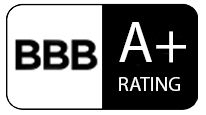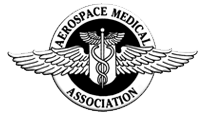Unmanned aerial vehicles are a growing part of aviation and national defense strategies. Unmanned Aerial Vehicles (UAV) and Unmanned Aerial Systems (UAS), also known as drones, are aircraft either controlled by pilots from the ground or increasingly, autonomously following a pre-programmed pattern or mission. While some companies or government agencies require FAA medical certification or have their own internal standards, FAA Part 107 states that a designated Visual Observer (VO) and the person manipulating the controls of any small Unmanned Aircraft System may not participate in the operation of a sUAS if they know or have reason to know that they have a physical or mental condition that could interfere with the safe operation of the sUAS.
Obvious examples of physical or mental incapacitations that could render a remote Pilot In Command (PIC), person manipulating the controls, or VO incapable of performing their sUAS operational duties include, but are not limited to, such things as:
1. The temporary or permanent loss of the dexterity necessary to operate the CS to safely control the small UA.
2. The inability to maintain the required “see and avoid” vigilance due to blurred vision.
3. The inability to maintain proper situational awareness of the small UA operations due to illness and/or medication(s), such as after taking medications with cautions not to drive or operate heavy machinery.
4. A debilitating physical condition, such as a migraine headache or moderate or severe body ache(s) or pain(s) that would render the remote PIC, person manipulating the controls, or VO unable to perform sUAS operational duties.
5. A hearing or speaking impairment that would inhibit the remote PIC, person manipulating the controls, and VO from effectively communicating with each other. In a situation such as this, the remote PIC must ensure that an alternative means of effective communication is implemented. For example, a person who is hearing impaired may be able to effectively use sign language to communicate.
UAV / DRONE PILOT FITNESS & GENERAL FAA MEDICAL FORMS
The forms below provide general guidance in the category listed.
These forms may not be appropriate for your specific condition or situation.
Contact Pilot Medical Solutions at 405-787-0303
| FAA Part 107 | FAA 333 Public Guidance | |
| 333 Checklist | FAA 333 Public Guidance | |
| 333 Checklist | FAA 333 Exemption Checklist | |
| 8500-8 | Airman Medical Application |
|
| AIM | Airman Information Manual | |
| AVIATOR FORMS | ||
| Chg. ADD | Change of Address | |
| Change ID | Change Airman Identification Number | |
| Chg. Name | Change Airman Name | |
| 8710-10 | Designated Pilot Examiner Application | |
| UAV | Drone Pilot Medical Research | |
| 7480-1 | Landing Area Proposal Notice | |
| Pilots | NASA’s Aviation Safety Reporting System | |
| Controllers | NASA’s Aviation Safety Reporting System | |
| Mechanics | NASA’s Aviation Safety Reporting System | |
| NOTAM’s | Current Notices To Airmen | |
| Security | FAA Security Statement Form | |
| SELCAL | Selective Calling Application / Aeronautical Radio, Inc. | |
| Waiver#1 | FAA Flight Waiver Form 1 | |
| Waiver#2 | FAA Flight Waiver Form 2 | |
| 7162A | FAA Experimental Petition Form 7162A |



